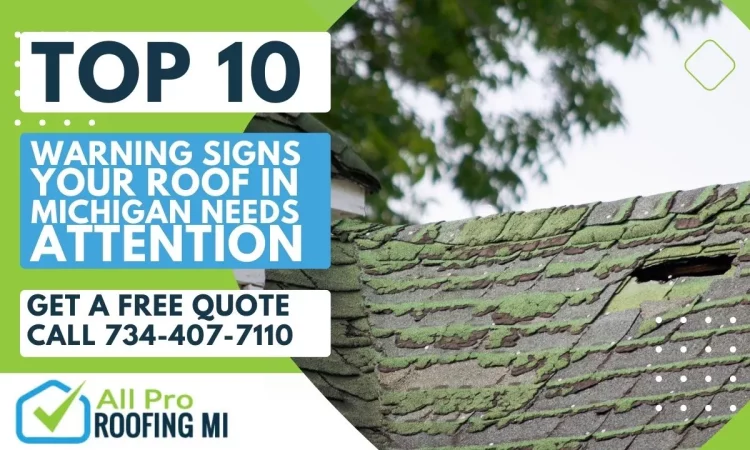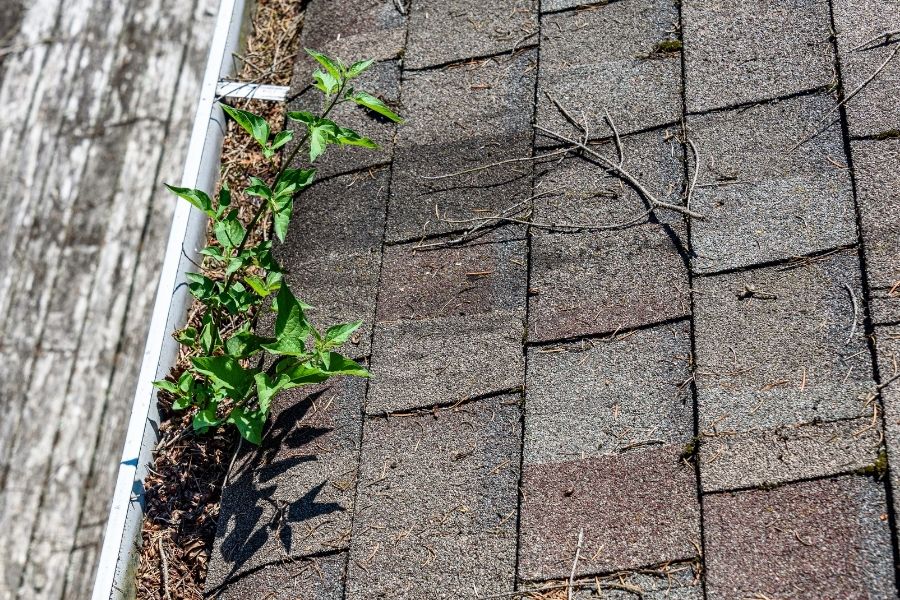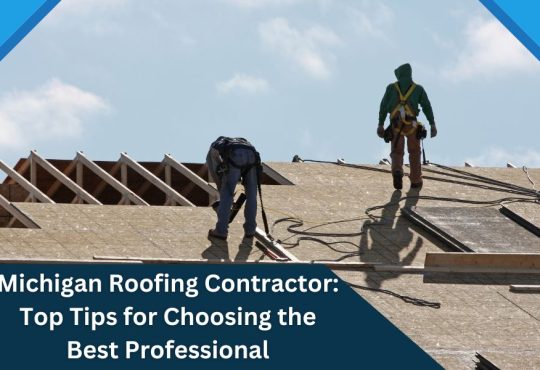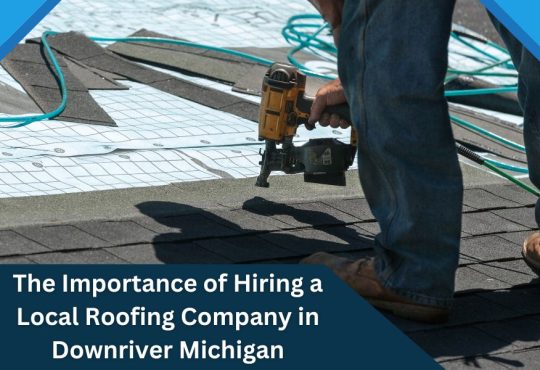
Maintaining your roof’s integrity is paramount for your home’s safety and protection. This becomes even more critical in a state like Michigan, known for its harsh weather conditions. Regular roof maintenance helps identify potential problems early, enabling timely repairs and preventing costly replacements.
Moreover, a well-maintained roof ensures optimal insulation, reducing energy costs and prolonging the roof’s overall lifespan. Ignoring timely maintenance can lead to severe consequences, compromising the structural integrity of your home and jeopardizing your safety.
Age of Your Roof
Most roofs in Michigan, particularly those made of asphalt shingles, have an average lifespan of 20 to 25 years. However, this can vary depending on factors such as the materials’ quality, installation techniques, and exposure to extreme weather conditions. If your roof has reached this age threshold, it’s prudent to schedule an inspection, even if no visible issues are apparent.
Signs that an old roof might need attention include:
- Curling or buckling shingles.
- A significant amount of shingle granules is in the gutters.
- Spots where the roof decking is sagging.
Another typical indication of an aging roof is daylight seeping through roof boards. Always remember early detection of these signs can save substantial repair costs.

Sagging Areas
Sagging areas on the roof are typically indicative of more severe problems. This sagging can be identified visually as a dip or a depression in the structure, disrupting the smooth, flat line of the roof. Internally, you might notice a discoloration or a damp spot on the ceiling, suggesting a sagging area above it.
These sagging areas can be hazardous for several reasons. First, they often imply that there is moisture infiltration, possibly leading to the growth of mold or mildew, which can have profound health implications. Second, sagging may indicate that the roof’s structural integrity is compromised due to prolonged exposure to heavy snow loads, typical in Michigan weather. If not addressed promptly, these sagging areas can lead to a roof collapse, causing immense property damage and posing a significant safety risk. Consequently, it’s crucial to consult with a professional roofing contractor if you notice any signs of sagging.
Leaks and Water Damage
Leaks and water damage are among the most common and damaging issues affecting your roof. Identifying them early on can prevent further damage and costly repairs.
Several telltale signs can identify roof leaks. Look for water stains that extend across ceilings or run down walls. If you notice any wet spots, dampness, or moldy odors in your attic after heavy rain, this could also indicate a leak.
Water damage can also cause the paint and plaster on your walls or ceiling to bubble and peel. Additionally, missing or damaged shingles on your roof may signify a potential leak, as these areas are less protected from the elements.
Remember that roof leaks can be tricky to pinpoint because water can enter the roof in one place and run down another before it seeps into the ceiling. As such, where you see the water or stain might not be directly above the actual roof damage. A professional roof inspection can accurately diagnose and address the exact location of the leak and the extent of the damage.
Damaged or Missing Shingles
Michigan’s weather, often characterized by strong winds, hail, and intense winter storms, can severely damage or displace shingles. The wind is a significant adversary to your roof’s well-being. During a windstorm, the force doesn’t hit the top evenly. The corners, edges, and ridge lines are particularly susceptible to high wind pressures, which can loosen the shingles. Once the wind gets underneath a loose shingle, it can easily lift it off, exposing the roof deck to the elements.

Roof Debris
Roof debris can be more than just an eyesore; it can signal more significant issues with your roof. A common type of roof debris is leaves, twigs, or branches, mainly if tall trees surround your home. Accumulating such waste can retain moisture, leading to rot or mold and possibly damaging your shingles.
Moreover, excessive debris could indicate a damaged or misaligned gutter system meant to direct waste and water away from your roof. If the gutters are not functioning correctly, debris can accumulate, leading to water pooling and potential leak issues.
Shingle Granules in Gutters
Another type of debris to watch out for is shingle granules. If you notice granules in your gutters or downspouts, it could be a sign that your shingles are deteriorating due to age or weather damage. This might warrant a closer inspection from a roofing professional.
Always remember that while some debris is to be expected, especially after a storm, a sudden increase or persisting accumulation could be an early warning sign of more significant roofing problems. It’s crucial to keep your roof and gutters clean and to schedule regular inspections to check for potential issues.
Excessive Moss or Algae Growth
Excessive moss or algae growth on your roof can be a telltale sign of underlying issues. Moss, which thrives in shady, cool, and damp environments, can trap moisture against the roof’s surface, accelerating wear and leading to potential water damage. Algae growth, often appearing as black streaks or spots, is aesthetically unappealing and can indicate moisture buildup. Both moss and algae can cause shingles to lift or curl, making them vulnerable to wind damage and leaks. The prolonged presence of these growths can shorten the lifespan of your roof, necessitating premature replacement. If you spot extensive moss or algae, it’s recommended that a roofing professional assess the situation to prevent further damage and maintain the health of your roof.

Cracked or Damaged Flashing
Flashing is a critical component of your roof system, designed to redirect water away from critical areas of the roof, such as valleys, joints, edges, and places around vents or chimneys. These areas are vulnerable to water intrusion due to their design or construction. Flashing, typically made from metal, helps to seal these areas and prevent water leakage into the roof structure or interior of the home.
When flashing is cracked or damaged, it loses its ability to divert water, resulting in potential leaks effectively. Damaged flashing can occur due to several reasons, such as weathering, corrosion, or poor installation. You might notice signs like water stains in the attic or along the ceilings or walls, indicating water seeping around the flashing. Neglecting damaged flashing can lead to more extensive roof damage, such as rot or mold in the decking or structural components of the roof. Therefore, it’s crucial to regularly check the state of your roof’s flashing and seek professional help for repair or replacement if damage is detected.
Increased Energy Bills
An unexpected surge in energy bills could indicate compromised roof insulation due to damage. A roof in good condition plays a vital role in maintaining your home’s energy efficiency. It acts as a barrier, preventing heat from escaping during winter and blocking it from entering during summer. Any damage to the roof, such as missing shingles or leaks, can disrupt this thermal barrier. Heat can escape through these compromised areas in winter, causing your heating system to work harder to maintain a comfortable indoor temperature.
Similarly, in summer, these damaged areas can allow more heat to penetrate, putting additional strain on your air conditioning system. Both scenarios result in increased energy consumption, reflected in higher utility bills. Therefore, if you notice a sudden increase in your energy costs, it’s advisable to have a professional roof inspection to identify and rectify any potential roof damage.
In conclusion, homeowners should look out for several warning signs of potential roof damage. These include the presence of water stains indicative of leaks, damaged or missing shingles, accumulation of roof debris, shingle granules in gutters, excessive moss or algae growth, cracked or damaged flashing, and an unexplained increase in energy bills. All these signs point to potential underlying issues with the roof.
The importance of professional roof inspections and regular maintenance must be balanced. A professional examining your roof can accurately pinpoint the exact location of damage and provide appropriate solutions. Regular inspections also ensure early detection of problems, preventing minor issues from escalating into significant damage.
If you observe any warning signs on your roof, don’t hesitate to contact All Point Construction. Their team of skilled professionals is prepared to assess and address your roofing needs with utmost precision and efficiency. Don’t wait until minor issues become significant problems; call All Point Construction today at 734-407-7110. Your roof is the frontline of your home’s defense against the elements; let All Point Construction ensure it is in top condition.








